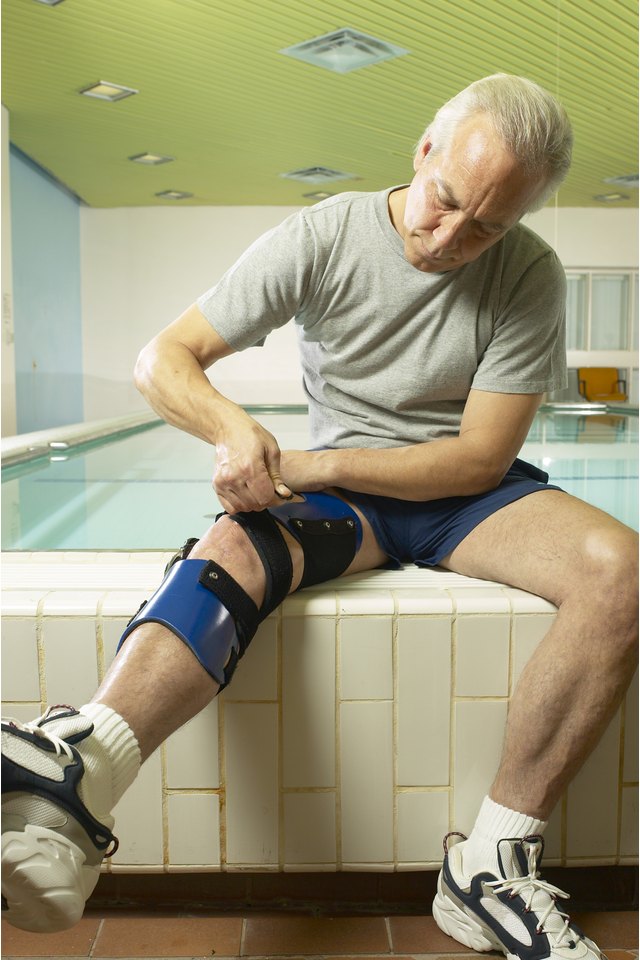MCL Tear and Contraindicated Exercises

A medial collateral ligament , or MCL, is a loop of tissue that connects the inner aspect of the knee to the femur, also called the thigh bone. When pressure is applied to the knee from the side, or when the knee is twisted, a tear in the medial collateral ligament can result. Precautions should be taken when you have an MCL tear, including abstaining from exercises that may further harm that ligament.
Stair Climbers
Stair climbers use the gluteal, calf, hamstring, and quadricep muscle groups -- your buttocks and legs. These machines work by simulating the action of climbing stairs, and for those with MCL tears, stairs should be avoided. Scientists T.W. Lu and C.H. Lu observed the forced applied to the knee and surrounding muscle groups in their 2006 study, "Forces Transmitted in the Knee Joint During Stair Ascent and Descent." Due to the force applied to the knee and surrounding ligaments, the scientists cautioned against using stair climbers in rehabilitation programs.
Deep Squats
Squats are an effective exercise that work the front and back of your legs and your gluteal muscles, and don't require expensive gym equipment. But if you have an MCL tear, deep squats are not safe. Dr. Eric Berkson with the Quincy Medical Center advises against "... squats or any exercise that causes crunching, clicking or pain at the kneecap." Under the guidance of a physician or physical therapist, shallow squats may be used during rehabilitation.
High-Impact Exercises
Jumping, running and hopping are forms of high-impact exercises called pylometric exercises. During a pylometric exercise, much force is applied to the limb being exercised. An injured MCL is unstable and would not fare well against the force applied to it if you ran, jumped or hopped on the injured knee. Because there is evidence the exercises can cause injury to the knee, Berkson places high-impact and pylometric exercise on his "NOT recommended" list.
Seated Leg Extension Machines & Lunges
Berkson also advises against using quadricep extension machines, or seated leg extension machines, and lunges. Seated leg machines are found in gyms and place strain on the ankles, upper thighs and knees. Lunges place direct strain on the knee, the MCL ligament and the patellar tendon. The patellar tendon runs from the kneecap, or patella, to the shin bone, also called the tibia. Berkson notes that exercises that place strain on the patellar tendon or region should be avoided. This includes lunges and leg extensions.
References
Writer Bio
Having studied at two top Midwestern universities, Catherine Field holds degrees in professional writing and patient safety. Writing since 2000, Field has worked with regional newspapers while publishing fiction online. She conducts medical communication research at a Midwestern medical institution and is slated to write a book based on her research findings.
